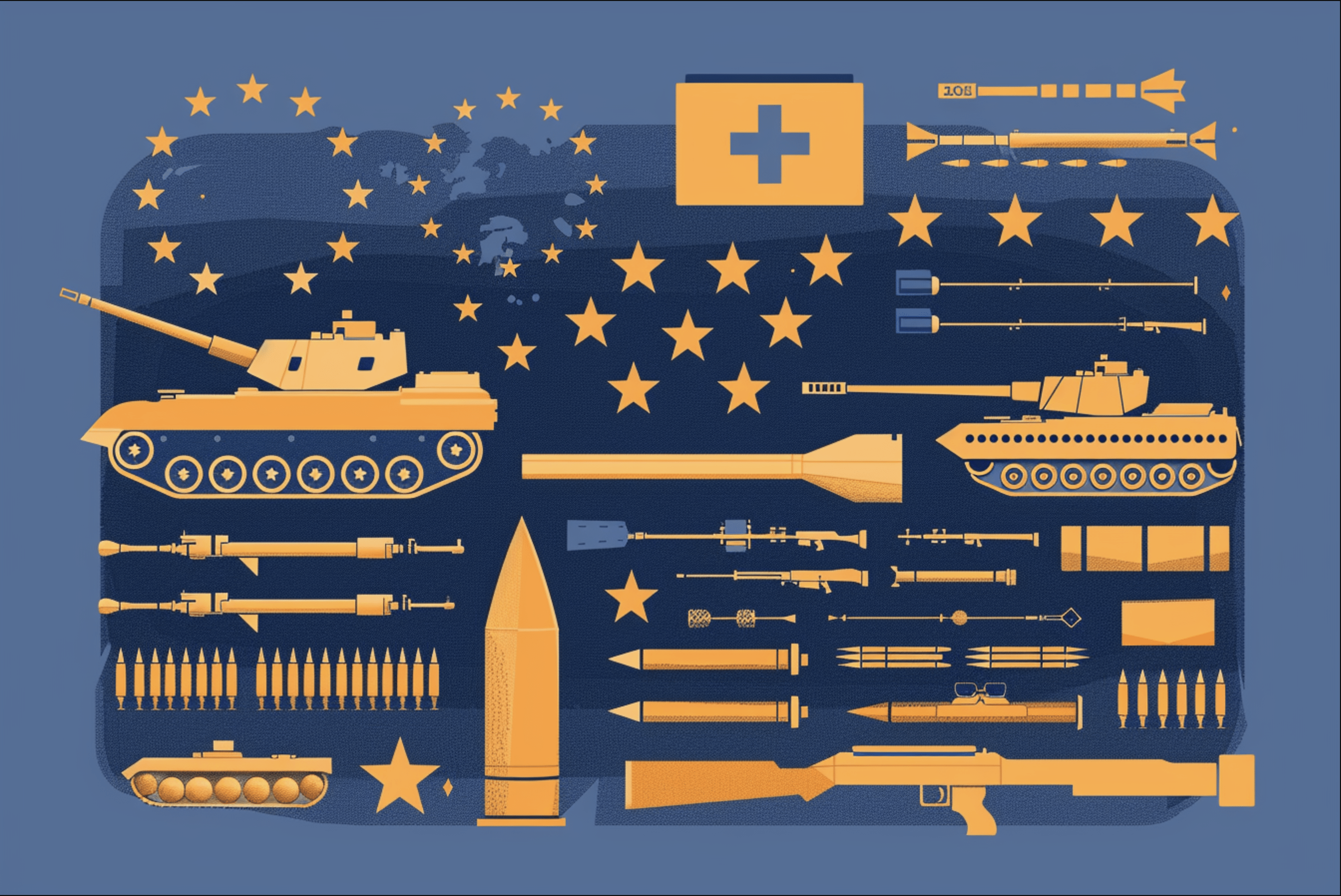Financing Europe's Leap Towards Defence Integration
The latest European Defence Industrial Strategy outlines a commitment to support investments by Member States and the European defence industry in the development and market introduction of cutting-edge defence technologies and capabilities.

-
FileLetta Report (1.21 MB)
In a report released by the European Parliament, the cost associated with the fragmentation of defence markets in Europe was estimated to exceed €100 billion annually. This figure highlights the potential financial benefits that could be realised from establishing a common market for defence.
However, achieving a comprehensive European Defence Industrial and Technological Base that is agile, innovative, and capable of spanning the full spectrum of capabilities required to guarantee European security will demand significant financial investment.
The latest European Defence Industrial Strategy outlines a commitment to support investments by Member States and the European defence industry in the development and market introduction of cutting-edge defence technologies and capabilities.
The newly established European Defense Industry Programme aims to allocate €1.5 billion from the EU budget for the years 2025 to 2027. However, the demand for resources far exceeds this allocation.
How to Finance New EU Defence Needs
Discussions on the specific nature of this support continue, highlighting the critical need for quick and decisive action to identify and implement effective solutions. In recognition of this urgency, Member States and EU institutions must take into consideration a variety of innovative funding mechanisms to support collective defence initiatives.
When it comes to public investments, substantial direct support through the EU budget, aimed at financing and/or co-financing joint research, development, and procurement of a well-defined set of critical projects of common interest remains paramount to the integration of the European industrial market. In this regard, a single instrument covering the capability’s life-cycle, from the design phase to joint acquisition to in-service support, would provide Member States with a considerable incentive.
While fostering a long-term planning approach – thanks to the early establishment of common requirements – this framework would significantly contribute to de-risk early production, reduce non-recurring costs and encourage MS to commit to the final product, possibly the greater guarantee of a steady flow of orders for the European DITB.
In this context, joint development and acquisition can significantly boost economies of scale and translate into lower price-per-unit, thus encouraging more and more MS – including those devoid of a significant defence industrial base – to become less reliant on off-the-shelf acquisitions from third countries.
In the March 2024 European Council conclusions, EU leaders signalled a decisive intention to facilitate the defence funding at European level: ‘the European Council invites the Council and the Commission to explore all options for mobilising funding and report back by June’.
In this framework, an intense debate on the topic of defence Eurobonds is also gaining ground. Despite the political sensitivities surrounding this option, it has the potential to swiftly mobilise significant resources on one hand, and to foster the development of collaborative projects on the other, thereby facilitating a gradual transition towards a unified market.
Given these considerations, such an approach should inherently carry certain conditions. To alleviate legitimate concerns towards embracing this shared financial obligation, it is essential to pair this approach with clear repayment plans at the end of the term. This includes establishing viable strategies for augmenting the EU's own financial resources.
An additional strategy worth considering involves utilising the European Stability Mechanism (ESM). In response to the COVID-19 pandemic, the ESM introduced the Pandemic Crisis Support, a dedicated credit facility aimed at helping ESM member countries cover healthcare expenses related to the crisis.
A parallel initiative could establish a specialised credit line for national defence spending. Mirroring the Pandemic Crisis Support framework, this Defence Support Line could provide loans of up to 2% of a member country's GDP at exceptionally favourable interest rates, specifically earmarked for defence and security expenditures.
The sole criterion for accessing this credit facility would be a formal pledge by the requesting member state to allocate the funds exclusively towards national defence efforts.
This commitment would be articulated within a detailed plan submitted to the ESM for approval. Once approved, Member States could tap into the credit line, drawing funds up to the agreed amount under terms outlined in their individual plan.
The March 2024 European Council also invited the European Investment Bank ‘to adapt its policy for lending to the defence industry and its current definition of dual-use goods, while safeguarding its financing capacity’. Following this political indication, the EIB Group Security and Defence Industry Action Plan has been presented by President Nadia Calviño with the aim of strengthening EU funding tools for the defence industry.
The plans aim at significantly empowering the EIB to support defence-related activities beyond the current scope of dual-use projects. This will require a thorough revision of the definitions of dual-use projects, the list of excluded activities, and the EIB's lending policies towards the defence industry, along with other measures.
Empowering the European Investment Bank represents a crucial first step and a potent tool to bridge our investment gap in defence and enhance the EU’s common military capabilities. Additionally, market-based strategies that promote private investment play a crucial role as well.
Currently, defence companies encounter significant challenges in accessing capital and financing and the essential financial services provided by banks and investors. This predicament further jeopardises Europe's capability to develop a robust and enduring militaryindustrial base.
Many SMEs, when confronted with these obstacles, opt to cease their defence production. As a result, it's imperative to consider innovative financing as a means to mobilise and encourage private investment. This could involve ensuring a portion of the risks tied to the financed project, offering guarantees for loans or certainty on future public procurements.
Our common defence funding needs are substantial, and in order to meet our critical strategic objectives we need swift and effective solutions.
The European Union can only adequately tackle the intricate challenges of modernising its defence capabilities by exploring diverse financing mechanisms and integrating both public and private resources. This strategy highlights a comprehensive approach aimed at enhancing EU defence expenditure by blending institutional support with market-driven incentives.
Establishing a robust and resilient European defence industrial and technological base is crucial to put the EU in the conditions to meet its strategic objectives and promote a global ecosystem of peace.
This text is an excerpt from the report Much More Than a Market, supervised by Enrico Letta at the request of the European Council

Joint development and acquisition can significantly boost economies of scale and translate into lower price-per-unit, thus encouraging more and more EU Member States to become less reliant on off-the-shelf acquisitions from third countries
IEP@BU does not express opinions of its own. The opinions expressed in this publication are those of the authors. Any errors or omissions are the responsibility of the authors.

If you are interested in the European Parliament activity, please check a new tool that the IEP@BU has just launched, with professors Simon Hix and Abdel Noury: the EPVM - European Parliament Vote Monitor
